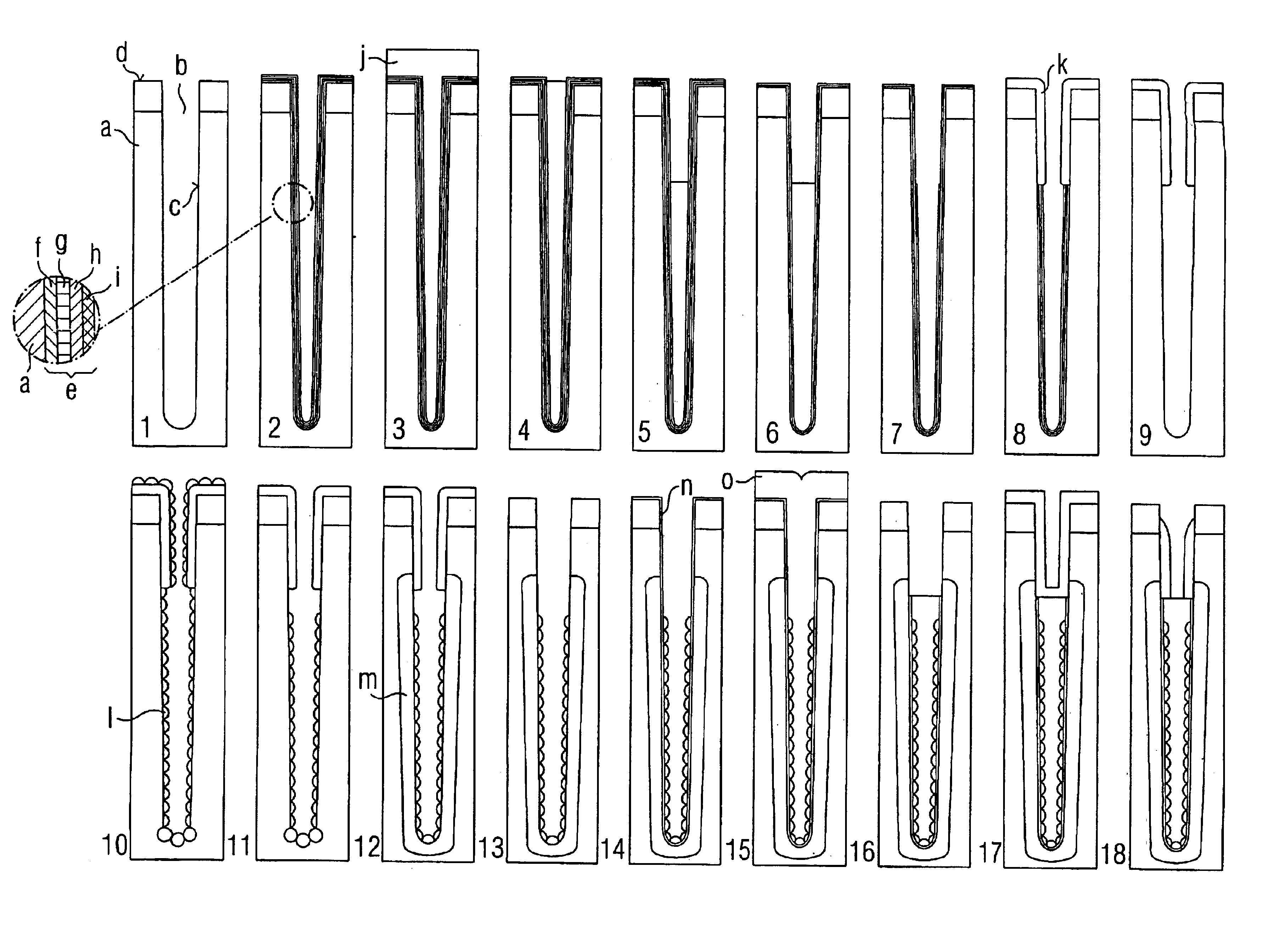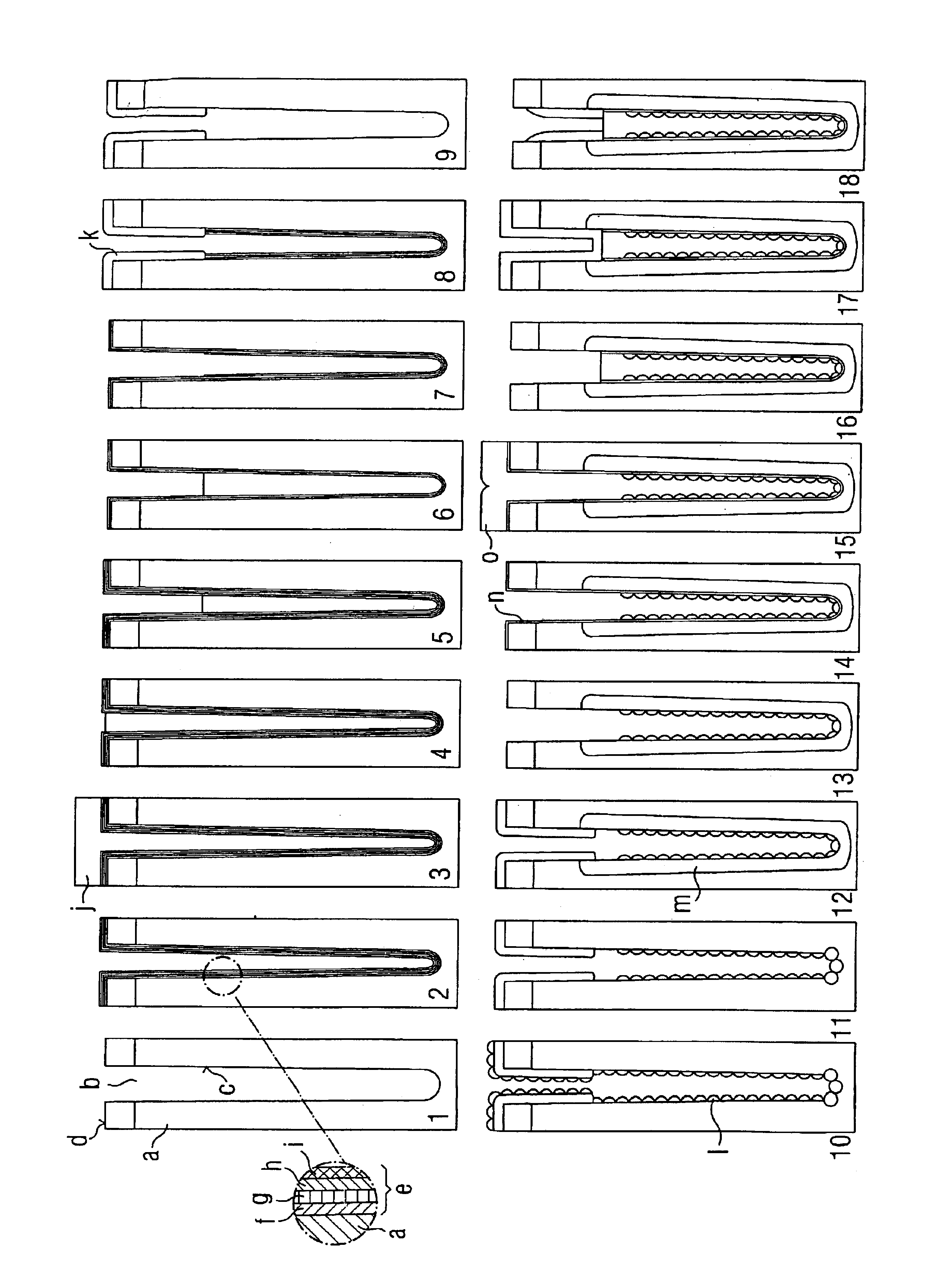Method for fabricating a deep trench capacitor for dynamic memory cells
a technology of dynamic memory cells and capacitors, which is applied in the direction of semiconductor devices, electrical apparatus, transistors, etc., can solve the problems of increasing the depth of the trench, increasing the difficulty of etching, and increasing the technical difficulty, so as to reduce the process complexity
- Summary
- Abstract
- Description
- Claims
- Application Information
AI Technical Summary
Benefits of technology
Problems solved by technology
Method used
Image
Examples
Embodiment Construction
The exemplary embodiment relates to the configuration of the method according to the invention with the non-selective application of grains using a layer which masks the collar region.
In process step 1, a trench structure, i.e. the trench b, is produced in a conventional way in a silicon substrate a. In step 2 a thin mask layer e is deposited on the inner surface c of the trench b and on the substrate top surface d.
The thin mask layer is distinguished by the fact that it can be removed selectively with respect to the surface c of the trench b and is not oxidized or is only oxidized to an insignificant extent during a step of oxidizing the surface c which is required during the further integration process.
In an advantageous embodiment, this thin mask layer e comprises a layer sequence made up of a first layer f, preferably oxide, a second layer g, preferably Si nitride, a third layer h, preferably amorphous silicon, and a fourth layer i, preferably Si nitride.
This layer sequence is d...
PUM
 Login to View More
Login to View More Abstract
Description
Claims
Application Information
 Login to View More
Login to View More - R&D
- Intellectual Property
- Life Sciences
- Materials
- Tech Scout
- Unparalleled Data Quality
- Higher Quality Content
- 60% Fewer Hallucinations
Browse by: Latest US Patents, China's latest patents, Technical Efficacy Thesaurus, Application Domain, Technology Topic, Popular Technical Reports.
© 2025 PatSnap. All rights reserved.Legal|Privacy policy|Modern Slavery Act Transparency Statement|Sitemap|About US| Contact US: help@patsnap.com


